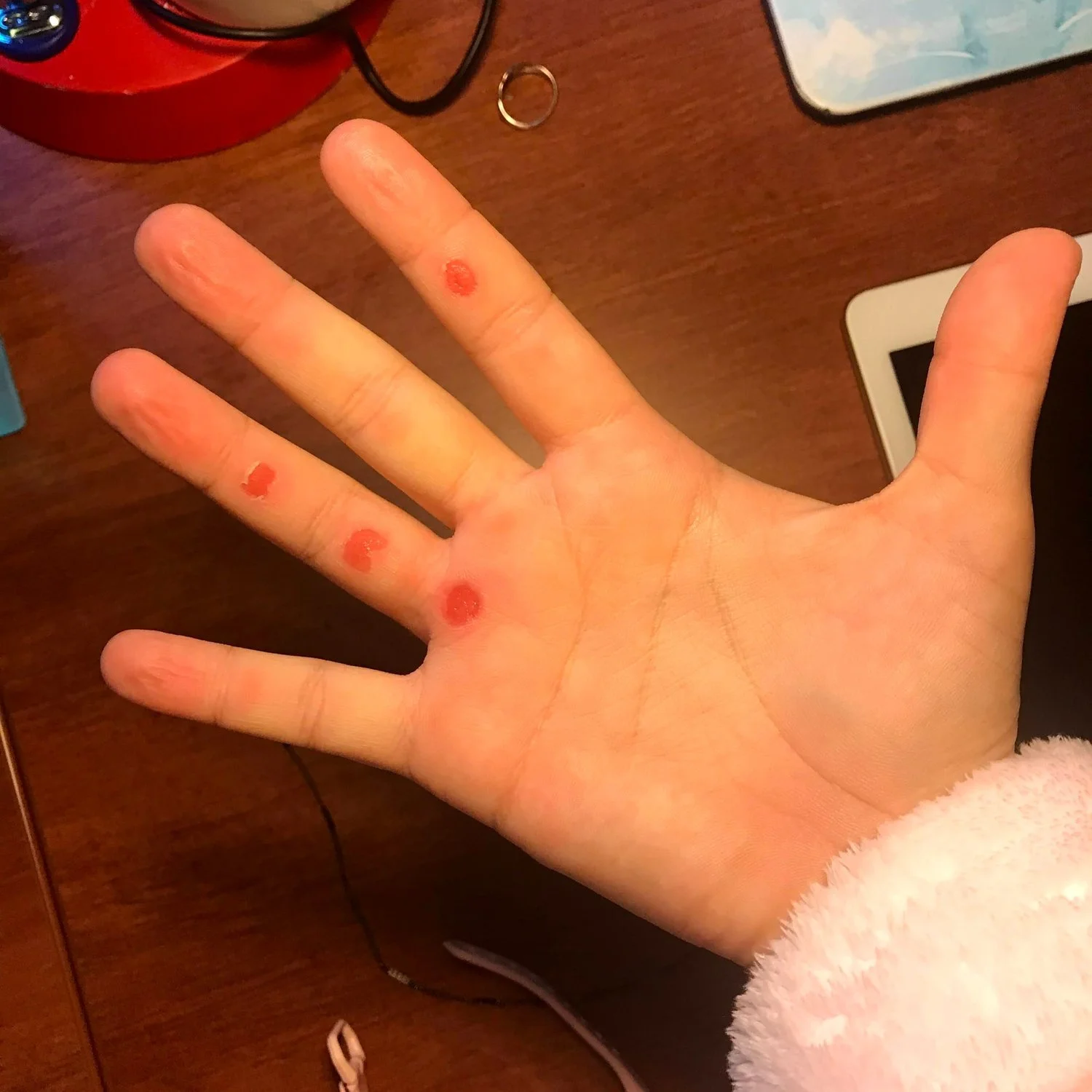When Will My Hands Stop Looking Like This?
If you’re relatively new to climbing and have been spending all of your free time at the gym, congratulations. You’ve officially caught the climbing bug.
Annnnnnd there’s a good chance your hands look something like this:
STOP CLIMBING! I know, I know. You want to keep hitting the boulder problems for as many days in a row as possible because then you’ll get stronger quicker, blah, blah, blah.
Do me a favor and put your thinking cap on for a hot second. You want to get calluses on your hands, but are calluses going to form on open wounds? NO! If you keep climbing with open wounds - even with some tape on them - you’re not going to attain the calluses that you so desperately crave.
Yes, I understand you want to climb more. But the craters in your hands are going to continue limiting you and your development as a climber. I was in the same metaphorical boat as you two years ago. So, I did a bunch of research and came to the following four action steps to help heal my hands and develop calluses:
1. Take a break. If your hands look anything like the pictures above, stop climbing. Take a minimum of 3 days off (5 if it’s really bad). Let those sausages heal themselves while you binge-watch as many climbing documentaries and YouTube videos as physically possible. You’ll come back to your projects with some new technique ideas, plenty of inspiration, and fingers that aren’t pocketed with open wounds.
2. Slather on some salve. Whether you’re taking a few days off to heal or already back to climbing, use some sort of salve to moisturize your finger flesh gloves (a.k.a. skin) and keep them nice and healthy. There’s plenty of salves specifically designed for climbers (see them at the bottom of this post), but my go-to is O'Keeffe’s Working Hands Cream. Works like a charm.
3. Use chalk. My mistake when I first began climbing was I didn’t use chalk. BIG mistake. Climbing chalk (see recommended brands below) is designed to soak up moisture on your hands and keep them from sliding around on the holds and causing blisters to form. Let’s break it down: blisters form because of heat and friction. In climbing, heat and friction happen when your hand continuously rubs against a hold, like when your hands are sweaty and you can’t seem to get a good grip on a hold, so you keep moving it around.
4. Use tape. Climbing tape is your best friend. Yeah, you may look like a newb if you have a bunch of tape on your hands, but who cares? The tape is going to help you climb for longer without absolutely destroying your hands. As soon as one of your blisters or calluses rips off or becomes a flapper (when the dead skin doesn’t completely tear off), wash that fresh flesh and wrap it with some climbing tape (tape suggestions can be found below). Then keep climbing!
Taking some time in the short-run is going to save you so much time in the long-run. So do it. Just…*sigh*…do it.







